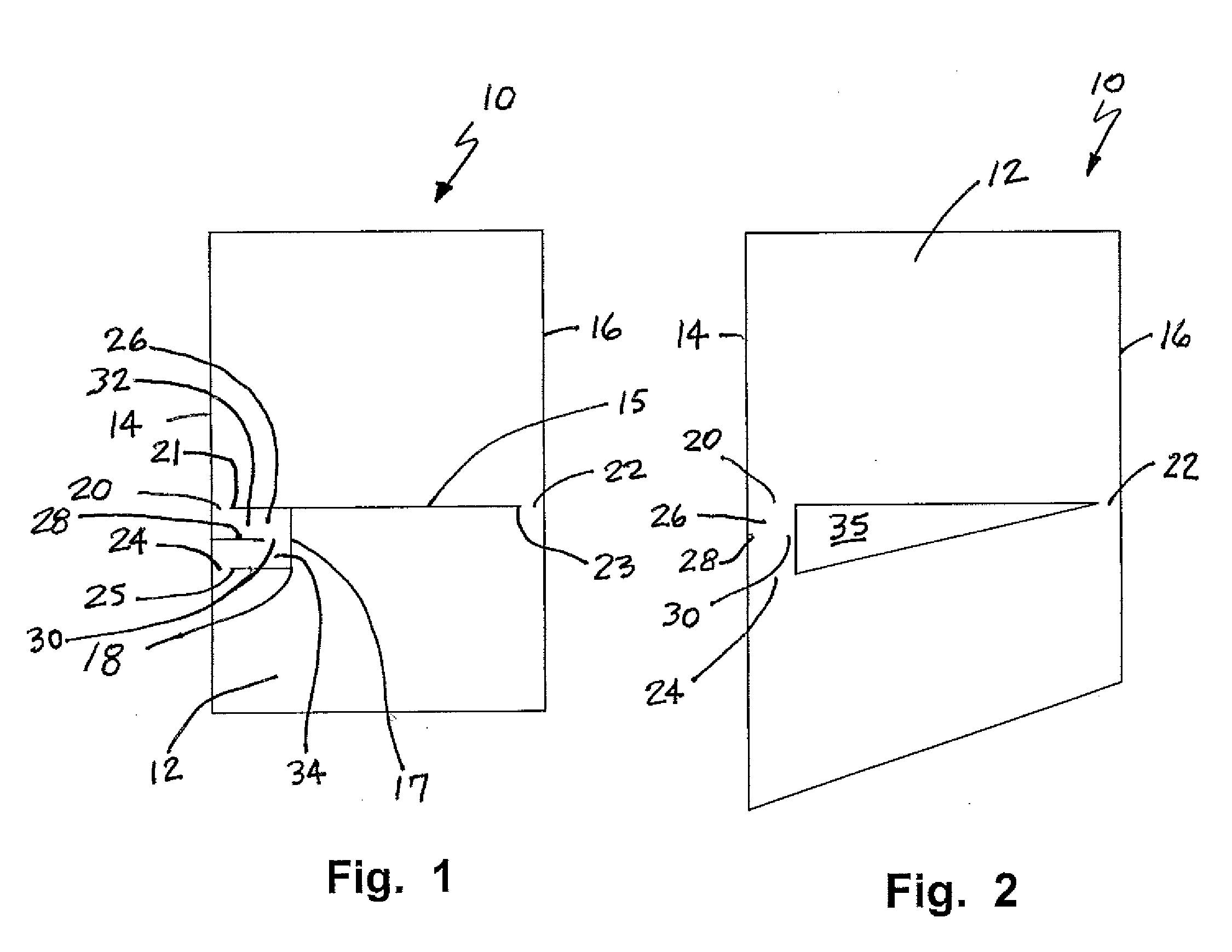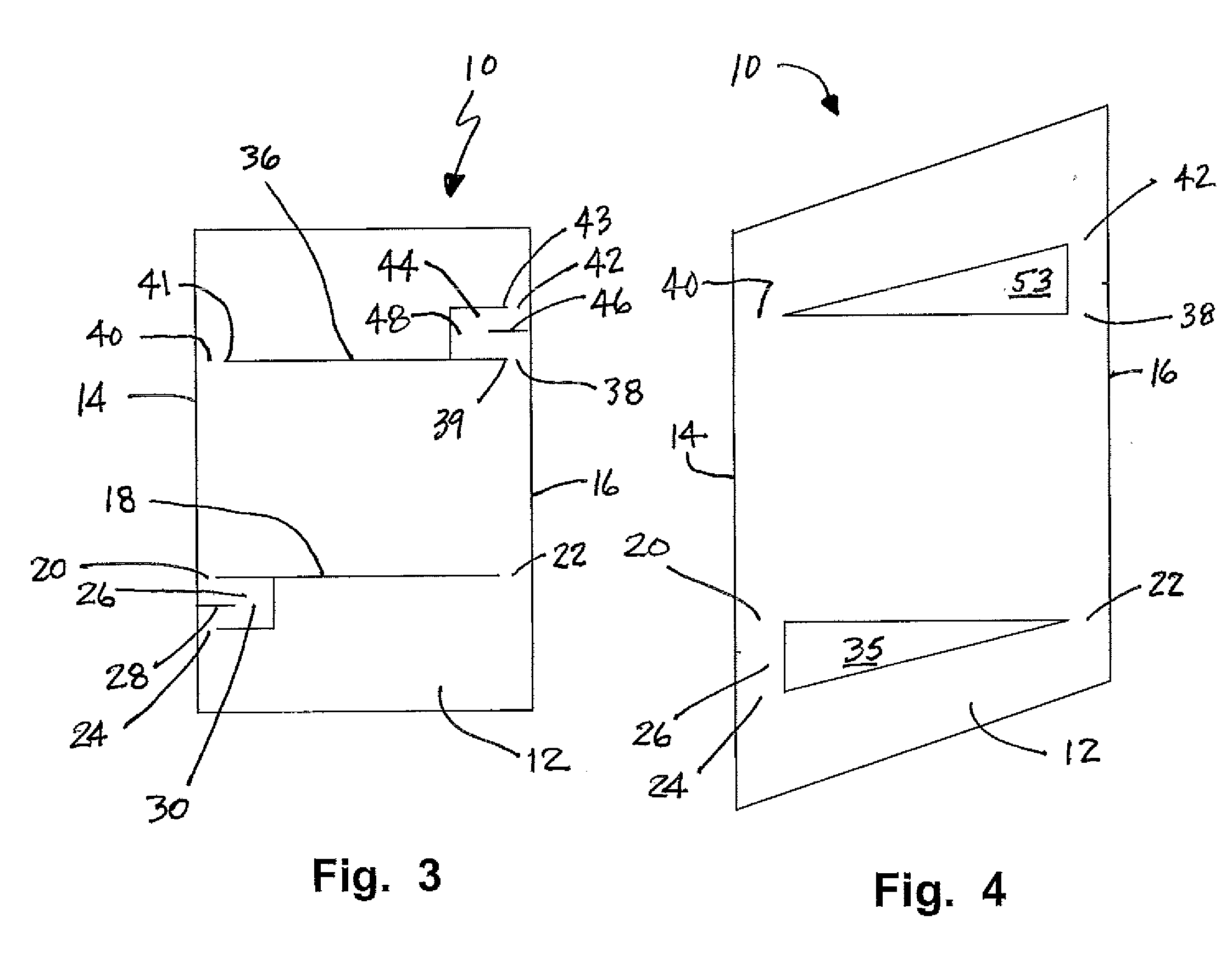Die Cut Insulation Blanket
a technology of insulation blankets and die cuts, applied in the direction of cellulosic plastic layered products, paper/cardboard articles, manufacturing tools, etc., can solve the problems of increasing the friability of materials, reducing the strength and integrity of resulting materials, and the number of fiber-to-fiber bonds
- Summary
- Abstract
- Description
- Claims
- Application Information
AI Technical Summary
Benefits of technology
Problems solved by technology
Method used
Image
Examples
first embodiment
[0022]Reference is now made to FIG. 1 illustrating the insulation blanket 10 of the present invention. As shown the insulation blanket 10 includes a body 12 formed from an insulation material. The body 12 includes a first edge 14 and a second edge 16 wherein the first and second edges 14, 16 are provided opposite one another.
[0023]A typical material useful in the construction of the insulation blanket 10 of the present invention is a non-woven synthetic material, a non-woven natural material and mixtures thereof. The material may include thermoplastic fiber material, thermosetting fiber material, bicomponent fiber material and mixtures thereof. Various polymers are particularly useful in the present invention. Still more specifically the material may be selected from a group consisting of polyolefin, polypropylene, polyethylene, polyester, nylon, rayon, polyethylene terephthalate, polybutylene terephthalate, cotton, kenaft silk, cellulose, hemp, jute, sisal, shoddy and mixtures ther...
second embodiment
[0028]the expandable insulation blanket 10 is illustrated in FIGS. 3 and 4. As illustrated in FIG. 3, the insulation blanket 10 includes all of the structures illustrated in the FIG. 1 embodiment and each of those structures is labeled with an identical reference number. In addition, the insulation blanket 10 illustrated in FIG. 3 includes a third slit 36 that is substantially h-shaped. The third slit 36 defines a fifth hinge point 38 between a first end 39 of the third slit 36 and the second edge 16, a sixth hinge point 40 between a second end 41 of the third slit 36 and the first edge 14 and a seventh hinge point 42 between a third end 43 of the third slit and the second edge. A second hinge body 44 is outlined by the third slit 36, the fifth hinge point 38 and the seventh hinge point 42. A fourth slit 46 extends across the second hinge body 44 and defines an eighth hinge point 48 between the fourth slit 46 and the third slit 36.
[0029]The second embodiment of the insulation blanke...
PUM
| Property | Measurement | Unit |
|---|---|---|
| length | aaaaa | aaaaa |
| diameter | aaaaa | aaaaa |
| perimeter area | aaaaa | aaaaa |
Abstract
Description
Claims
Application Information
 Login to view more
Login to view more - R&D Engineer
- R&D Manager
- IP Professional
- Industry Leading Data Capabilities
- Powerful AI technology
- Patent DNA Extraction
Browse by: Latest US Patents, China's latest patents, Technical Efficacy Thesaurus, Application Domain, Technology Topic.
© 2024 PatSnap. All rights reserved.Legal|Privacy policy|Modern Slavery Act Transparency Statement|Sitemap



